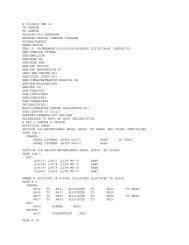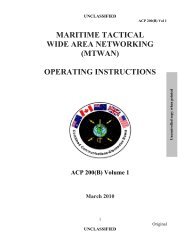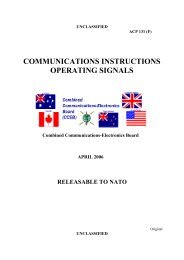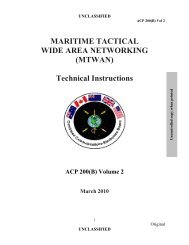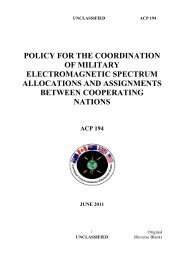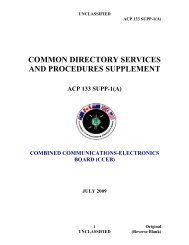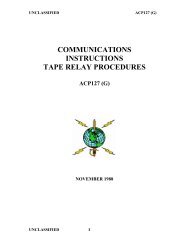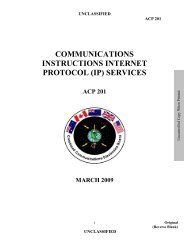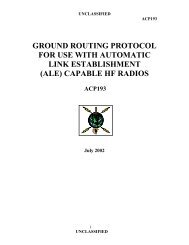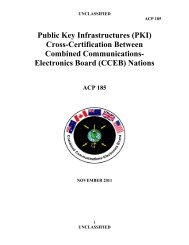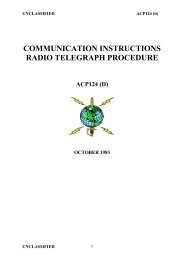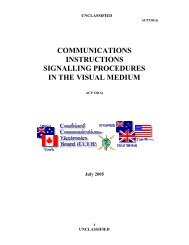ACP 122 (F) - Multilateral Planners Conference
ACP 122 (F) - Multilateral Planners Conference
ACP 122 (F) - Multilateral Planners Conference
Create successful ePaper yourself
Turn your PDF publications into a flip-book with our unique Google optimized e-Paper software.
UNCLASSIFIED<br />
<strong>ACP</strong> <strong>122</strong>(F)<br />
e. Degree of Access. The Sponsor(s)/Owner(s) are to establish a written<br />
understanding of the degree of access that users of the system will have to other<br />
connected systems;<br />
f. Access Control. The Sponsor(s)/Owner(s) are to determine the access controls<br />
that will be used to control users of the system when accessing the other connected<br />
systems;<br />
g. Network Management Disputes. The Sponsor(s)/Owner(s) are to establish a<br />
process by which dispute over network management issues can be resolved or be<br />
taken to a higher authority for resolution; and<br />
h. Information Aggregation. The Sponsor(s)/Owner(s) are to recommend to the<br />
national Defence Security Authority, the information aggregation situations that<br />
may require a security classification higher than that of the individual information<br />
items to which access is allowed on the network.<br />
INTEROPERABILITY CONCERNS<br />
816. The following concerns regarding interoperability should be considered when<br />
implementing a combined CIS:<br />
a. Just as a network needs to be managed from a performance point of view, there<br />
should also be some mechanism (or agency) to cater for the effective management<br />
of NETSEC measures (including configuration management, security<br />
management, key management, and access control);<br />
b. While cryptography can effectively deal with confidentiality and integrity in a<br />
network, other measures are necessary to deal with availability issues (fault<br />
tolerance, recovery procedures and redundancy); and<br />
c. The interconnections of a CIS to other systems (e.g., within a Service, or with<br />
allies) must be identified and it must be confirmed that the implementation of the<br />
interconnections satisfies the needs for adequate protection of sensitive<br />
information on the system. The adequate protection of sensitive information on<br />
the system is affected by the potential sharing of sensitive information with other<br />
members of the organisation and with other governments and organisations.<br />
8-4 Original<br />
UNCLASSIFIED



